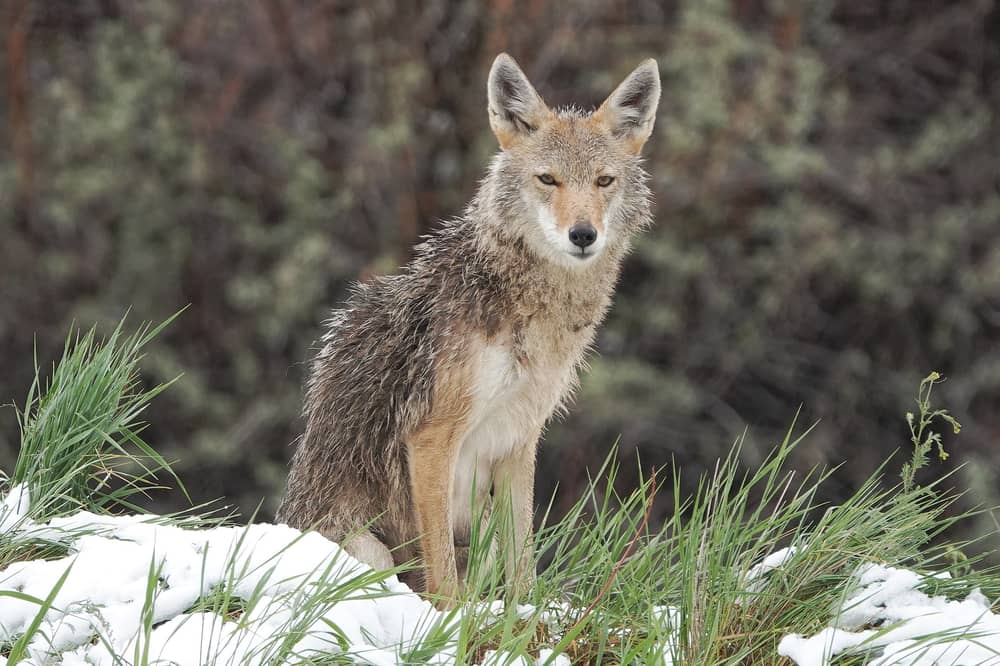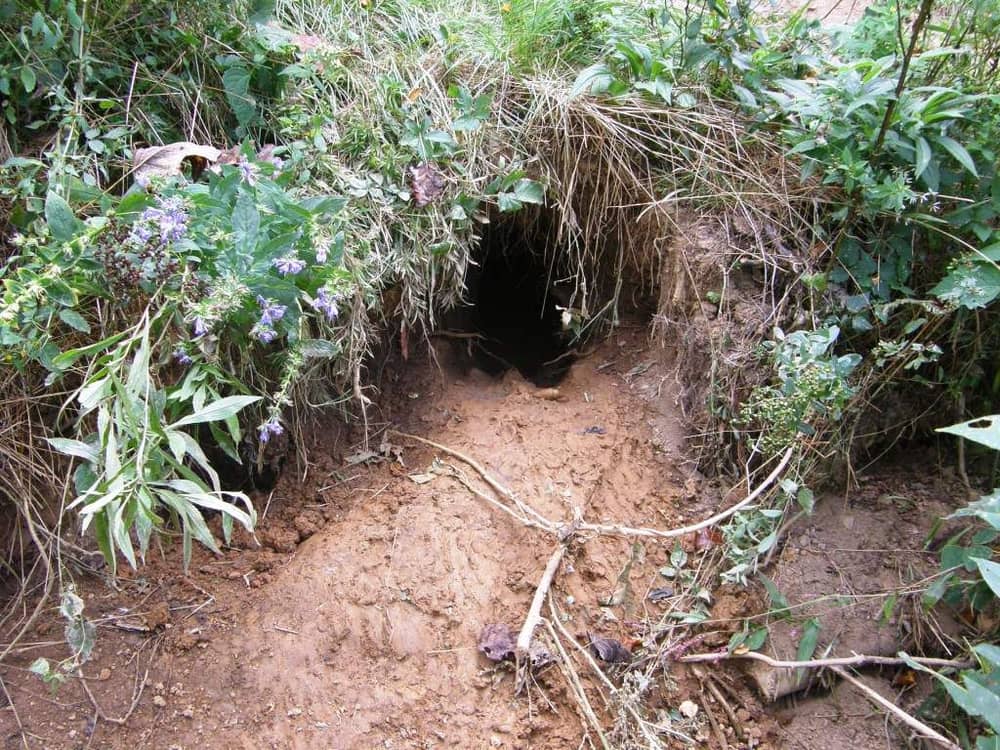There is a possibility that coyotes will frequently visit you if you live in a rural area or are further from the city. Coyotes are moving into yards and neighborhoods in search of food and water as a result of their declining habitats. How to get rid of coyote den?
Similar to wild dogs, coyotes frequently live in grasslands, hills, forests, and the outskirts of the countryside. Coyotes pose a threat to people, animals, and agriculture in addition to being an annoyance.
Coyotes are still a vital component of the environment, despite the impulse some people may feel to capture or kill them. because they aid in rodent population control. Read on for advice on how to remove coyotes humanely if you’re wondering how to do it.
Table of Contents
Why Do You Need to Get Rid of Coyotes?

Coyote control is a subject that provokes various viewpoints and opinions. mainly because coyotes and humans occasionally get into disputes. Some people or communities may want to get rid of coyotes for the following reasons:
Human Security
Coyotes occasionally display aggressive behavior against people. Especially if they are no longer afraid of others or have grown accustomed to being around them. This could be dangerous, especially in urban or suburban regions where coyote-human contacts are more common.
Pet Protection
Small dogs and cats kept as domestic pets may be in danger from coyotes, especially in places where their ranges overlap. Coyotes may need to be removed if pet owners want to keep their cherished pets safe.
Livestock Protection
Chickens, goats, and sheep are among the livestock that coyotes are known to prey on. To protect their animals and avoid financial losses, farmers and ranchers may try to reduce coyote populations.
Ecological Balance
Coyote populations have grown significantly in some areas, which may have an adverse effect on the ecosystem. A balanced population of wildlife species can be preserved by managing their numbers.
The removal of coyotes should be done carefully, taking into account moral, societal, and environmental factors. To encourage coexisting peacefully with coyotes, it is crucial to strike a balance between human concerns and the need to protect wildlife.
How to Get Rid of Coyote Den?

Coyote den removal can be a difficult task that calls for careful preparation and thought. Here are some tactics and strategies for dealing with a coyote den successfully:
Determine the Den
Find the coyote den on your property or in your neighborhood before taking any action. Search for indicators like dirt piles, openings in the earth, or well-traveled routes that point to a certain location. Be cautious since disrupting a den containing newborn pups may cause adult coyotes to become aggressive. Therefore, you should pay closer attention and get expert advice.
Modification of Habitat
Coyotes may relocate if the den site is made less desirable. Remove any potential food sources, such as pet food, exposed trash, and fallen fruit. Secure garbage cans and compost bins, and remove any bushes or other material that could serve as a hiding place for coyotes. Use fences to further limit access to potential den locations, such as those underneath sheds or decks.
Exclusionary Policies
To stop coyotes from using a den that is below a building, such as a porch or shed, you might put exclusionary measures in place. Hardware cloth or heavy-gauge wire mesh can be used to block off any openings or gaps. Just make sure it extends below the surface to prevent digging.
Hazing
Hazing tactics can serve to increase the coyotes’ innate dread of people and make the area around their den less appealing. Create a threatening atmosphere by shouting, slamming pots, or using air horns. Coyotes can be repelled with the help of lights or sprinklers that are actuated by motion. It’s crucial to keep in mind that hazing should be carried out responsibly and without endangering anyone.
Take Professional Advice
Consider contacting regional wildlife management agencies that specialize in wildlife eradication if the aforementioned techniques prove futile. They are qualified to evaluate the problem, offer advice, and put the right plans into action.
What Is The Best Thing To Keep Coyotes Away?
In some cases, it may not be feasible or desirable to completely eradicate coyotes from a region. However, there are a number of practical methods to discourage coyotes and reduce their numbers. Here are some suggestions for deterring coyotes:
Secure Food and Garbage Sources
Because coyotes are opportunistic scavengers, it’s crucial to get rid of anything that could entice them to your home. When disposing of trash, use safe, wildlife-resistant containers, and stay away from leaving pet food or unattended food outside.
Fencing
Coyotes can be kept away from your property by erecting a strong fence around it. To discourage digging, choose a fence that is at least six feet high and extends at least one foot underground. Make sure there are no crevices or places where coyotes could fit.
Lighting and Noise
Loud noises and well-lit areas generally make coyotes nervous. Invest in motion-activated lighting or employ gadgets that make noise at random. You can make a coyote-unfriendly atmosphere by using radios or ultrasonic repellents.
Pet Supervision
When your pets are outdoors, especially tiny dogs and cats, keep an eye on them. Keep an eye on their behavior and think about using a leash or keeping them in a safe, confined space.
Community Education and Reporting
Increase community understanding about coyote behavior and encourage ethical conduct. Encourage your neighbors to put coyote repelling measures in place. Inform local authorities right away of any violent coyote encounters or den sightings.
Coyotes are adaptable and intelligent creatures, so you should regularly use a combination of these tactics to improve their efficacy. Additionally, you must adhere to local rules and ordinances for regional advice.
What are coyotes afraid of?
Naturally wary animals, coyotes have a healthy phobia of some stimuli. Although individual coyotes may behave differently, there are a few things that they are typically terrified of:
Humans
Coyotes often have an innate mistrust of people and tend to avoid close encounters with them. By using suitable and regular hazing practices, one can reinforce this dread and teach the subject to link people with bad things.
Strong Sounds
Coyotes can be easily startled by loud or unexpected noises. They may become alarmed and startled by yelling out loud, clapping, blowing air horns, or banging pots and pans. Coyotes may be deterred from approaching or remaining in a certain region by using this method.
Shiny Lights
In general, coyotes steer clear of brightly illuminated environments, especially at night. They may feel uncomfortable and avoid areas with bright lights, particularly those that are motion-activated.
Animal defenders
To keep their animals safe from predators like coyotes, livestock owners frequently utilize llamas, donkeys, or dogs. Coyotes can be intimidated and deterred from approaching by the presence of these bigger, more protective animals.
Resistant Chemicals
You may be able to deter coyotes with some chemical repellents or deterrents that have been made especially for them. These repellents typically release unpleasant aromas or odors, which deters coyotes and makes the environment less enticing to them.
Final Thoughts
Coyote conflicts must be effectively managed and minimized using a balanced strategy that puts both human security and wildlife preservation first. Coyote eradication may not be feasible or environmentally responsible. Implementing measures to prevent their presence, however, can support a peaceful coexistence. You can use any of the aforementioned techniques to determine what works best for you.

